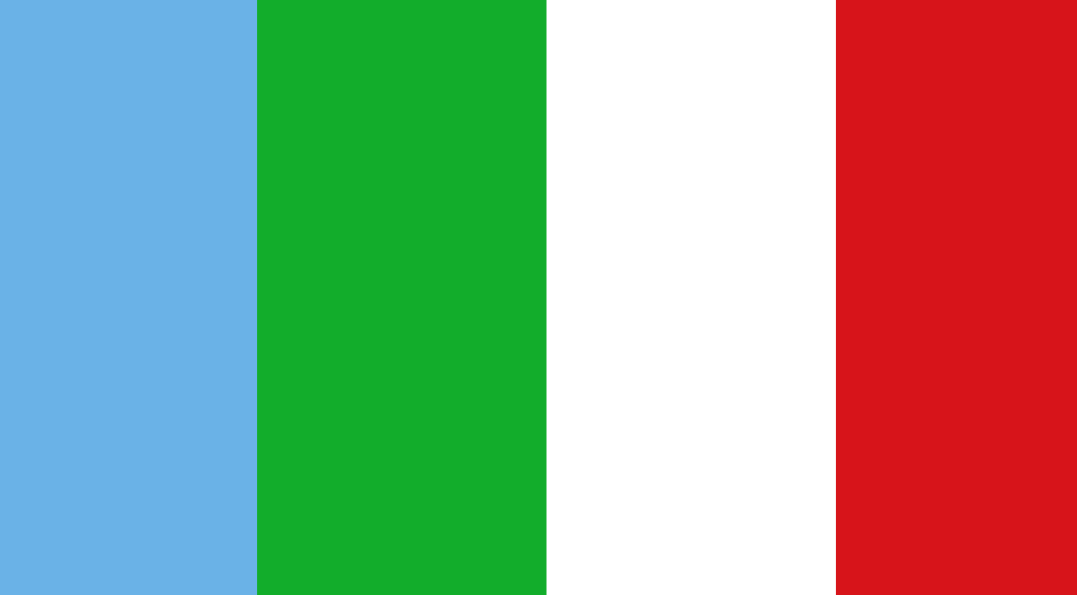Let's have a look at the Djibouti National Color. Djibouti, a tiny but culturally rich nation in the Horn of Africa, is known for its unique blend of history, geography, and culture. One aspect that profoundly represents the essence of Djibouti is its national color: light blue, green, white, and red. In this article, we'll delve into the rich symbolism of these color and explore their significance to Djibouti's identity.
The Historical Significance of Djibouti National Color
Light Blue - The Color of the Sea
Djibouti, located along the coast of the Red Sea and the Gulf of Aden, is often referred to as the "Land of the Blue." The light blue color in its flag represents the azure waters that surround the nation, signifying the importance of the sea in Djibouti's history and livelihood.
Green - A Tribute to the Lush Landscapes
Green symbolizes Djibouti's fertile regions, particularly the Goda Mountains and the lush vegetation found in certain parts of the country. It showcases the agricultural potential and the country's commitment to environmental sustainability.
White - Peace and Harmony
The white color in Djibouti's flag is a symbol of peace and harmony. It reflects the nation's dedication to peaceful coexistence in a region often marred by conflicts. Djibouti's role as a mediator and host to international peacekeeping forces is encapsulated in this color.
Red - Sacrifice and Courage
Red is a tribute to the sacrifices made by Djibouti's people throughout their history. It represents the bloodshed and courage of those who fought for independence and sovereignty.
The Cultural Significance of Djibouti National Color
Light Blue - The Maritime Heritage
The light blue color also extends to Djibouti's rich maritime heritage. It signifies the importance of fishing and trade, which have been integral to the livelihood of the Djiboutian people for centuries.
Green - The Connection to Nature
Green is not just a color but a way of life in Djibouti. It signifies the deep-rooted connection between the people and the natural world, highlighting their dependence on the land for sustenance.
White - A Harmonious Society
White is not just about peace but also about the diversity and harmony among Djibouti's various ethnic and religious communities. It showcases the nation's commitment to tolerance and unity.
Red - Resilience and Determination
Red embodies the resilience and determination of the Djiboutian people. It's a reminder that, despite their challenges, they continue to move forward with unwavering courage.
FAQs about Djibouti National Color
FAQ 1: Are these color unique to Djibouti?
No, these color are not unique to Djibouti, but their combination and symbolism are distinctive to the nation.
FAQ 2: What is the origin of Djibouti's flag?
Djibouti's flag, with its unique color arrangement, was officially adopted on June 27, 1977, when the country gained independence from France.
FAQ 3: How do Djiboutians celebrate their national color?
Djibouti Day, celebrated on June 27th, is a national holiday dedicated to showcasing Djibouti's culture and national pride, often featuring events and parades in which the national color prominently feature.
FAQ 4: Has the symbolism of these color changed over time?
The symbolism of Djibouti's national color has remained remarkably consistent over time, reflecting the enduring values and identity of the nation.
FAQ 5: Are there any restrictions on the use of these color?
There are no strict restrictions on the use of these color, but they are treated with great respect, especially in official and ceremonial contexts.
Conclusion
In conclusion, Djibouti's national color, light blue, green, white, and red, are a reflection of the nation's history, culture, and values. They represent the sea, the land, peace, and sacrifice, all of which are integral to Djibouti's identity. These color serve as a powerful reminder of the nation's unique place in the world, and they continue to inspire and unite the people of Djibouti.
References
- "Djibouti." CIA World Factbook. Central Intelligence Agency.
https://www.cia.gov/the-world-factbook/countries/djibouti/
- "Djibouti Flag and Meaning." World Atlas.
https://www.worldatlas.com/flags/djibouti
- "Djibouti: History." Infoplease.
https://www.infoplease.com/world/countries/djibouti
- "Djibouti Profile." BBC News.
https://www.bbc.com/news/world-africa-13231019
- "The Color of Djibouti Flag." Alamy.
https://www.alamy.com/the-color-of-djibouti-flag-image311742.html
